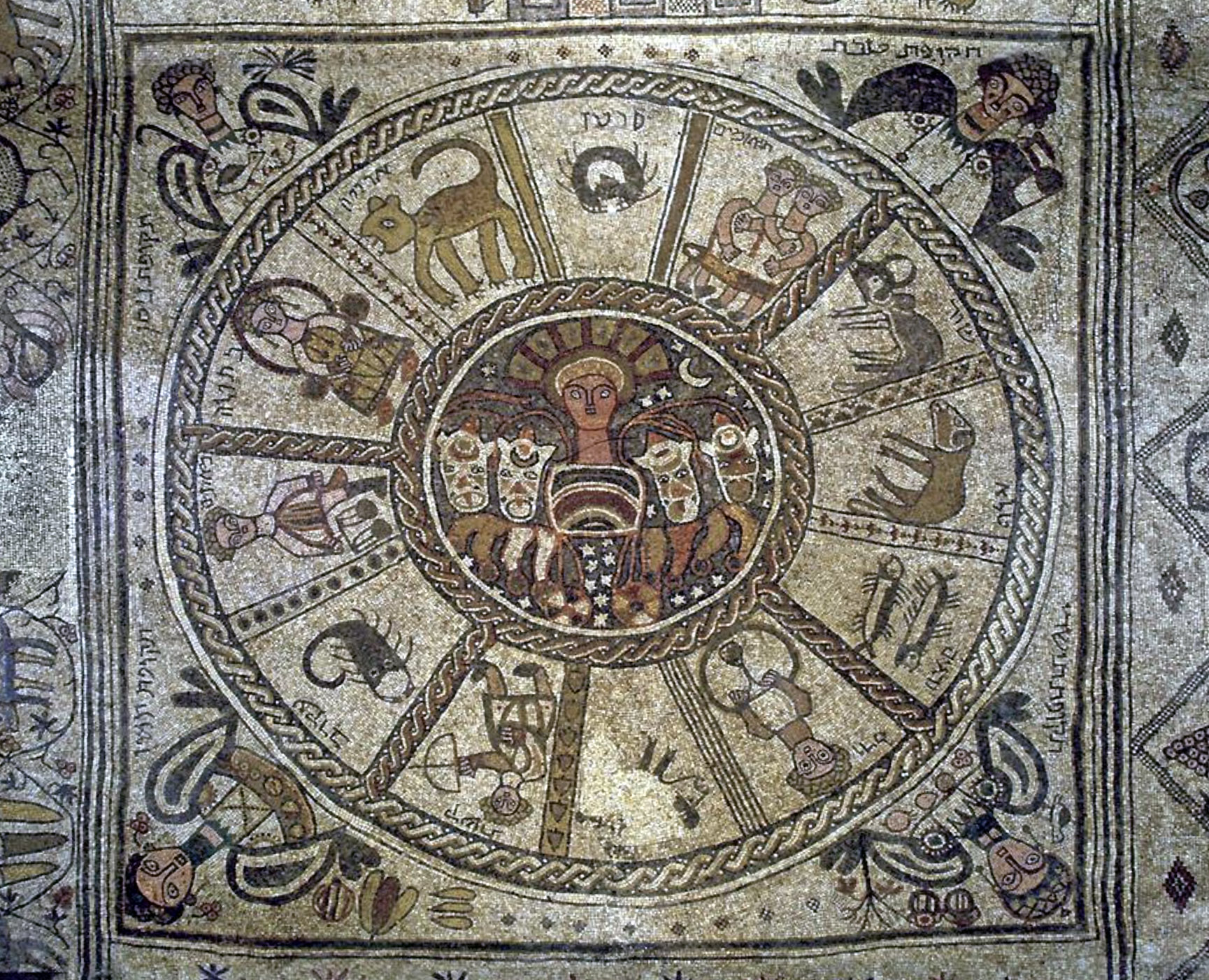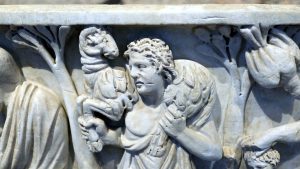28 7.1: Introduction and Art before Constantine
EARLY CHRISTIAN ART INTRODUCTION
Most of this module will focus on Early Christian art, since it broke with the Old Testament prohibition of figural imagery. The study of Christian art is divided by the pivotal moment when Constantine decriminalized Christianity in 313 in a document called the Edict of Milan. This document halted the persecution of Christians for their religious beliefs. There is scant evidence of distinctly Christian art before the 200s even though Christ died in 33 AD. The study of Early Christian art is roughly divided into two periods: before and after Constantine permitted Christians to worship openly.


Artstor gallery of Early Christian art for UNO students.
Follow this link for the Artstor gallery. This gallery is available only to UNO students. If you are off-campus, you will be prompted to log in. For refresher on using Artstor, see the UNO Artstor Libguide.
Early Christian Introduction TASK
The video below provides a brief overview of the Early Christian period. After watching the video, please answer the accompanying questions.
Early Christian Art History
Early Christian Introduction TASK prompts:
Which medium or art form did Early Christians avoid at first given the Old Testament ban on idolatrous images?
Where were Christian images first found and what symbols appeared there?
What influenced the representation of Jesus in images such as Jesus Teaches the 10 Disciples in Saint Domatilla and what meaning was conveyed?
What are sarcophagi and what types of images appeared on them?
During period of persecution in what guise or symbols might Christ appear?
How did Constantine support the spread of Christianity in terms of his patronage?
DURA-EUROPOS
Dura-Europos was a Roman outpost located on the outer periphery of the empire. Before it was a Roman city, it belonged to the Parthians, and before them, the Greeks. After being sacked in the 3rd century it was abandoned until it was excavated in the 20th century. It is significant to the study of Jewish and Early Christian art because among the various types of places of worship discovered there was a synagogue and a Christian House Church both of which were decorated with religious imagery.

Dura Europos TASK 1
The following videos provide insight into the character of Dura-Europos before it was abandoned in 265 CE and examines some of the artifacts discovered there. After watching the following videos, please answer the questions that accompany each.
Edge of Empires: Pagans, Jews, and Christians at Dura-Europos
Dura Europos TASK 1 prompts:
How is Dura Europos characterized in terms of its culture and language?
What decorated the ceiling tiles at the Jewish Synagogue?
What scenes were depicted in the baptistery of the Christian house church and how would they have related to the function of the baptistery?
Dura Europos TASK 2
Dura Europos Task 2 prompts:
What type of plan did Dura have?
When did the Romans take over Dura?
Why was it called the Pompeii of the Syrian desert?
The paintings in the synagogue are extremely significant for scholars. Consider the scenes depicted and why the presence of figural imagery was so at odds with Jewish beliefs.
Where was imagery located in the Christian house church?
What are some of the scenes that include Christ and what aspect of him did they showcase?
What was the plan of the house church and how many could it hold?
EARLY CHRISTIAN ART BEFORE CONSTANTINE
Christian art before Constantine witnessed the search to find a mode of representation for the new religion and is the first sub-period of Christian art. After Constantine made Christianity legal, ushering in the second period of Christian art, the character of art changed.
Art with a distinctly Christian message or subject matter did not appear before the late 200s CE. Why it only appeared then and not immediately in the decades after Christ’s death will be addressed in some of the videos in this section. In the examples of art before Christianity was legalized, the lingering influence of Greek and Roman art is felt and subjects from different textual sources were often combined. Images of Christ borrowed from earlier sources that originated in ancient Greece and Rome, but carried distinctly Christian meanings, which were often related to the object or location.

EARLY CHRISTIAN CATACOMBS
Besides Dura-Europos the other primary location where Christian art before Constantine has been found is in the catacombs. It was common practice to decorate small rooms, or cubicula, in the catacombs with paintings in the style of Roman frescoes of the time.

Catacomb TASK 1
The video in this section describes the layout and purpose of one of the many Roman catacombs. It also explores the nature of Christian art in this phase of development, including its influences and meaning. After watching the video, please answer the accompanying questions.
Catacomb of Priscilla, Rome
Catacomb TASK 1 prompt:
What do the catacombs consist of and where and how were the dead buried within them?
What reasons do the narrators provide for why Christian art does not appear until the 200s?
What is the significance of the Catacomb of Priscilla in terms of the development of Christian art?
Which symbols refer to Christ?
From which textual sources are scenes taken and what theme do they relate to?
Which aspects of Christ’s earthly life are emphasized in the imagery?
What is the relationship between Old Testament and New Testament themes?
What explains the naturalism of the figures in the catacomb?
How was Christ as the Good Shepherd represented
EARLY CHRISTIAN SCULPTURE BEFORE CONSTANINE
While Early Christian sculpture appears later than painting, perhaps because of the Second Commandment ban on idols or graven images, there are nonetheless examples of freestanding sculpture and relief sculpture. This section explores the identification and meaning of sculpted images in the Early Christian period before Constantine legalized Christianity.

Sarcophagi TASK 1
Wealthy Christians who could afford sarcophagi decorated with elaborate reliefs were buried in them instead of the slots in the catacomb walls.
Santa Maria Antiqua Sarcophagus
Sarcophagi TASK 1 prompt:
What is a sarcophagus?
For each of the motifs on the sarcophagus (Jonah, Good Shepherd, Baptism, Fishermen) describe what influenced its depiction and its meaning or significance for the person buried or why appropriate on a sarcophagus.
On what were the two figures in the center based and why were their faces not carved?
The Good Shepherd TASK 1
While freestanding sculptures are rare from the Early Christian period, they do exist. The video below examines the origins and popularity of Christ as the Good Shepherd. After watching the video, please answer the accompanying questions.
The Good Shepherd in Early Christianity – Hermes Recast
The Good Shepherd TASK 1
Why were freestanding sculptures so rare?
What is the source of this image?
Why was the image of Hermes good to adapt?
How is the style of this characterized?
What does the Good Shepherd mean in a Roman context versus a Christian one?

